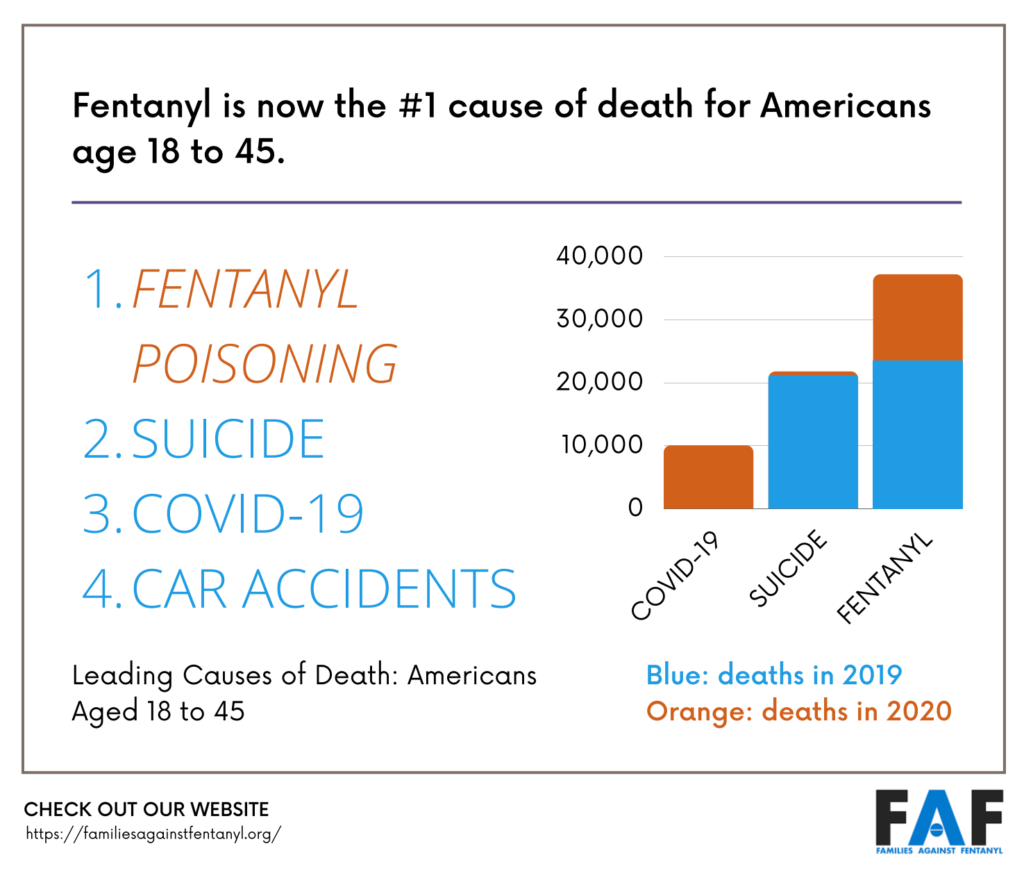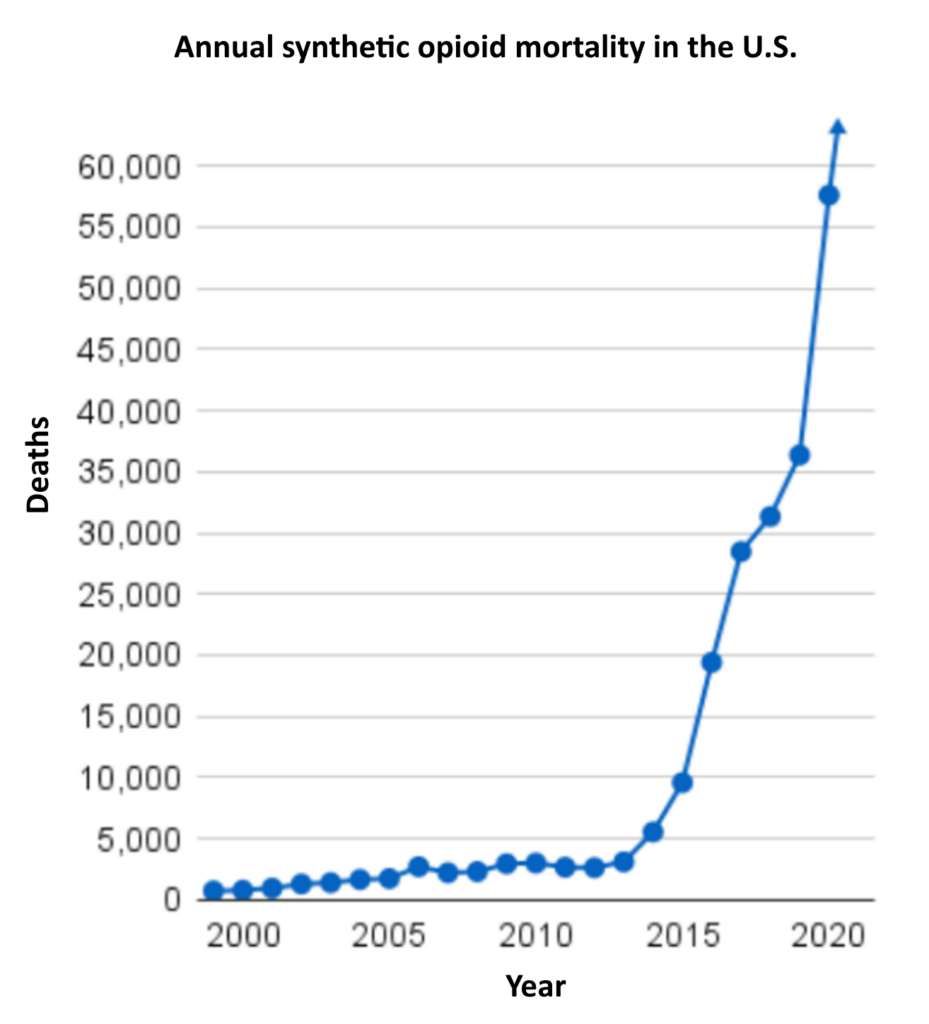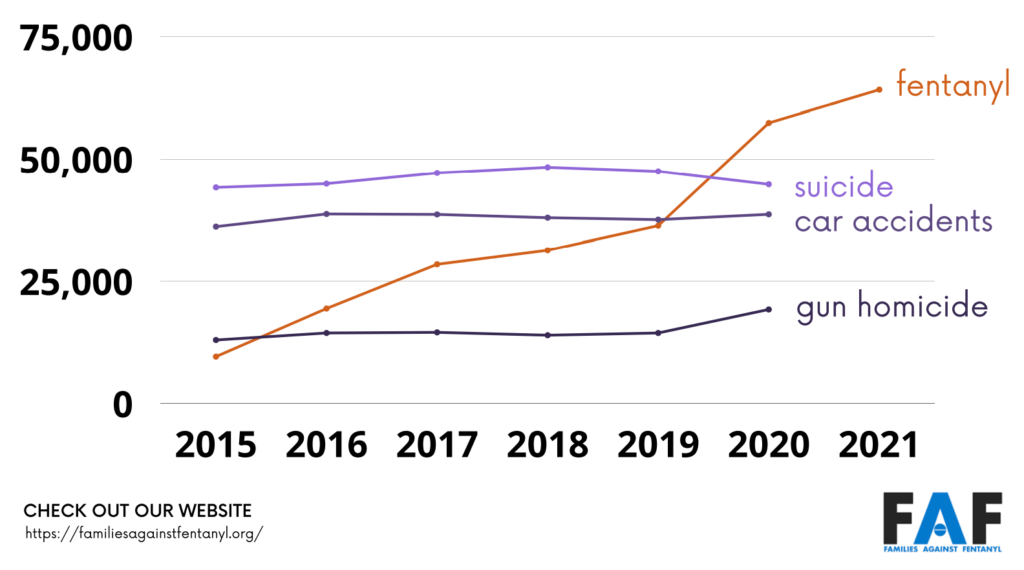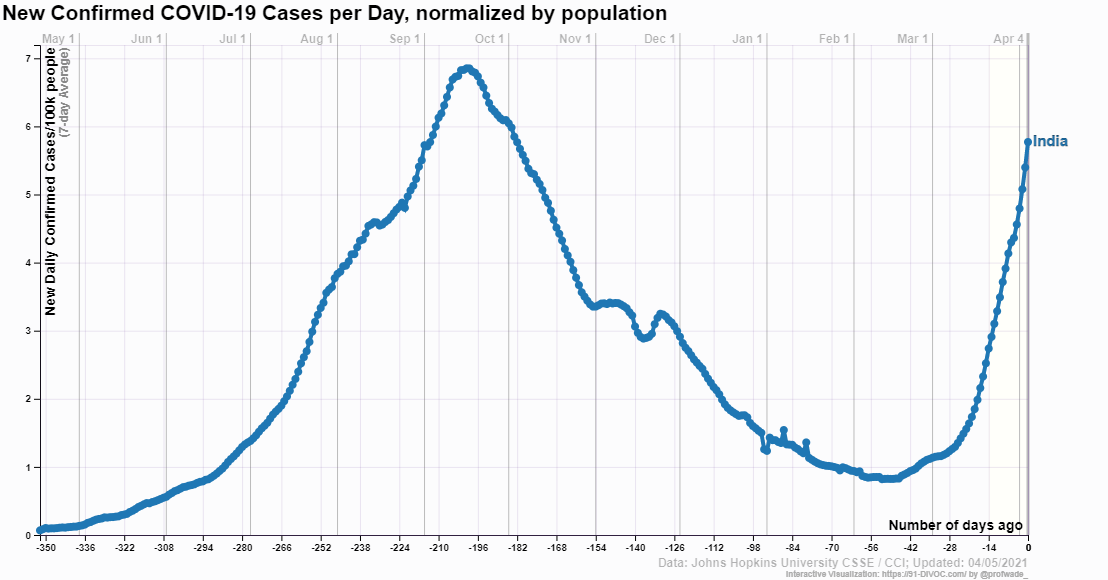“The deadliest drug we’ve ever known”: author Sam Quinones on how fentanyl and meth saturated the U.S.

By Erin McCormick
23 January 2022
(The Guardian) – For the last nine years, Sam Quinones has been studying the changing face of drug use, sales, and addiction in the United States.
In his new book, The Least of Us: True Tales of America and Hope in the Time of Fentanyl and Meth, he tracks the explosion of synthetic drugs that has hit the streets of America, increasing the danger of drug use and making addictive chemical substances far cheaper and more plentiful than ever before.
He finds that the days when drug production required land and agriculture are gone. Now drugs are being manufactured from toxic chemicals in vast quantities by Mexican traffickers and introduced to users by slipping them into the supply of other substances, like heroin and cocaine.
The Guardian spoke with Quinones about the origins and dangers of synthetic drugs and his theories about the intersection between drug use and homelessness. The conversation has been edited and condensed for clarity.
The Guardian: In your 2015 book, Dreamland, you explored how the opioid addiction crisis took hold in the small towns of America, through pain pills marketed by drug companies and over-prescribed by doctors. How have opioids changed since then?
Quinones: The opioid epidemic is probably a misnomer by now. It’s actually an epidemic of addiction.
The supply is no longer coming from doctors as much. Now you are finding the drugs that the Mexican trafficking world produces – primarily fentanyl and methamphetamines – everywhere. And that is due to the switch traffickers have made towards synthetic drugs. These drugs do not require a plant to produce – just chemicals.
These are extraordinarily dangerous drugs. Fentanyl is the deadliest drug we’ve ever known on the streets. And meth has the capabilities of truly turning people mentally ill. These drugs are now all over the country and cheaper and more prevalent than ever before. […]
The Guardian: Your book also looked at some devastating changes in the way methamphetamine is being manufactured. Tell me about that.
Quinones: For a lot of years methamphetamine was made with a chemical called ephedrine. Ephedrine is a decongestant found in Sudafed pills. It comes from the ephedra plant. The Mexican drug trafficking world industrialized that process and made methamphetamines with it through the 90s and the 2000s. That drug created a very euphoric feeling; it was a party drug.
Finally, in 2008, the Mexican government said only a few companies can possess ephedra and significantly reduced the amount of importation of the chemical. Once the government did that, the trafficking world in Mexico had to find a new way to produce meth. And they found a different way. There are a lot of chemicals. It stinks. It’s complicated. It has one benefit over ephedrine and that is that you can make the precursor many different ways with lots of different legal, industrial, toxic chemicals. The name of this precursor is phenyl-2-propanone, which is commonly known as P2P. With this new method, the government can really never crack down on your meth production the way they did with ephedrine. There are dozens of ways of making it, apparently. […]

The Guardian: How did this new formulation of meth change the effects of the drug?
Quinones: First of all, the reformulation allows the mass distribution of methamphetamine unlike we’ve ever seen before. So it’s now all across the country, from L.A. to Vermont, including regions like New England where it never existed really before in large quantities.
Along the way though, what I found is that it is accompanied by rapid onset of severe symptoms of schizophrenia, particularly hallucinations. There is incoherent babbling. There’s an extraordinary degree of paranoia. It’s very intense, so you think everybody’s out to get you. No longer is it a party drug. It’s more of a sinister drug, where you kind of turn inward.
The Guardian: How does that affect people’s lives? You believe this changed version of meth is connected to homelessness, right?
Quinones: What happens is people very quickly become homeless. As this form of meth has marched across the country, we have also seen an enormous increase in mental illness and in homelessness, particularly the encampments that we now have in so many towns across the country. I believe the tent encampments are connected intimately with this kind of methamphetamine. Certainly nobody on this form of meth wants to be in a homeless shelter. Because they’re kind of paranoid and scared of everybody. And so people feel a tent is a little pod where you can be alone away from this nasty world. And I believe it’s all connected. [more]
‘The deadliest drug we’ve ever known’: author Sam Quinones on how fentanyl saturated the US

